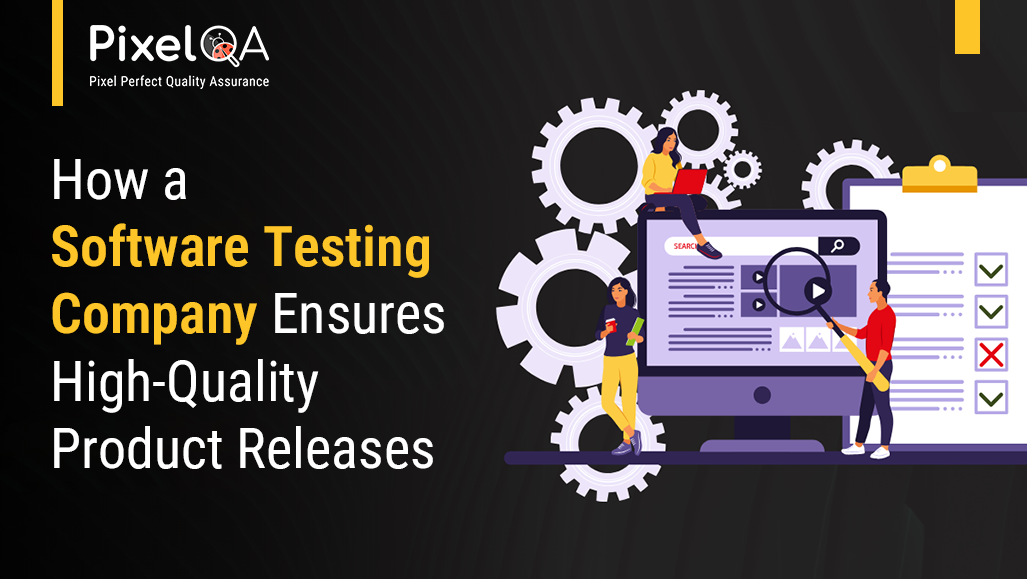
Customer expectations are at an all-time high in the current age of convenience. A mobile app, web platform, or enterprise software faces dastardly cannibalization of experiences if it has bugs and performance issues. Which could translate into reputation and, further, bottom-line loss to the organization. The answer is simple, a dedicated software testing company or better yet, Hire Automation Testers to ensure consistent quality and performance.
But how do they check if a product is release-ready? Let us now examine that and more in detail by closely following the multi-step process of a professional testing company to ensure the release of high-quality software.
1. Understanding the Product and Requirements
Every successful testing strategy begins with a clear understanding of the product and its intended use. Testers work closely with product owners, developers, and business analysts to gather and review:
- Functional specifications
- User stories
- Acceptance criteria
- Business objectives
During this phase, the software testers learn exactly what the software is supposed to do and why. It's this knowledge that makes a good QA team capable of spotting inconsistencies, edge cases, and failures.
2. Creating a Comprehensive Test Strategy
After understanding the scope and requirements, the QA team designs a test strategy tailored to the project’s goals, risk level, and timeline. This includes:
- Test planning: What type of testing will be performed (functional, non-functional, regression, security, etc).
- Tool selection: Choosing the right automation and test management tools (e.g., Selenium, JIRA, TestRail).
- Resource allocation: Assigning work and making sure timesheets match up with the development cycle.
A test strategy acts as a blueprint, ensuring a systematic and repeatable approach to testing.
3. Manual and Automated Testing
Manual Testing
Ideal for exploratory, usability, and UI/UX testing, manual testing allows testers to simulate real-world user behavior and provide qualitative feedback that automated scripts can’t.
Automated Testing
Automated tests are excellent for regression testing, performance testing, and large data-driven test cases. For quick feedback on builds enabling CI/CD, test automation frameworks like Selenium, Appium, and Cypress help in building strong auto test suites. An excellent software testing company knows how to strike a balance between the two approaches for efficiency maximization and test coverage.
4. Ensuring Test Coverage and Traceability
Test coverage isn’t just about the number of test cases, it’s about how thoroughly the software has been evaluated. QA teams ensure:
- Functional coverage: All features work as expected.
- Code coverage: Automated tests cover critical logic paths and conditions.
- Requirement traceability: Every requirement has a corresponding test case and result.
Modern QA tools enable easy tracking of which tests cover which features, making audits and quality reviews more efficient.
5. Continuous Testing in Agile and DevOps
Today’s rapid development cycles demand continuous testing. Testing companies integrate seamlessly with DevOps pipelines to:
- Run automated tests with every code commit
- Provide real-time feedback to developers
- Identify issues early in the development cycle
This shift-left testing approach ensures bugs are caught when they’re easiest and cheapest to fix.
6. Performance, Security, and Compatibility Testing
Beyond functional correctness, a high-quality product must be:
- Fast and responsive under load
- Secure against threats and vulnerabilities
- Compatible across devices, browsers, and platforms
Performance testing (using tools like JMeter or LoadRunner) ensures the software can handle real-world traffic. Security testing protects sensitive data and application integrity. Compatibility testing confirms consistent performance across environments. Testing companies often maintain extensive device labs and test environments to simulate real-world conditions accurately.
7. Bug Tracking and Defect Lifecycle Management
When defects are found, testing teams document them with clarity, context, and reproducibility. They:
- Use bug tracking tools (e.g., JIRA, Bugzilla)
- Assign severity and priority levels
- Collaborate with developers to validate fixes
- Re-test resolved issues to prevent regressions
This transparent process ensures that no bug falls through the cracks and that the product continues to improve with each iteration.
8. User Acceptance Testing (UAT) Support
Before final release, QA teams often assist in organizing or conducting User Acceptance Testing (UAT). This phase ensures that:
- End-users validate functionality from a business perspective
- Critical workflows operate smoothly
- No last-minute surprises derail the launch
Testing companies may guide UAT processes or help clients establish UAT criteria and environments, ensuring a smoother path to go-live.
9. Post-Release Monitoring and Feedback Loop
Even after release, quality assurance doesn’t stop. Leading testing companies offer post-release support by:
- Monitoring application performance
- Tracking user-reported issues
- Analyzing crash reports and error logs
This helps teams quickly deploy hotfixes if needed and gather data to improve future versions.
Conclusion
A software testing organization does much more than simply "find bugs." It is a quality partner for the entire software lifecycle, mitigating risks, speeding up releases, and instilling confidence in the product. With the integration of technical know-how, strategic thinking, and the most advanced tools, organizations like PixelQA a Software Testing Company are at the forefront of providing assurance that users get not only a functional product but a good one. If you're mapping out your next big launch, enlisting the services of a specialized testing company could be the best quality call you ever make.

_638840994613601647.png)